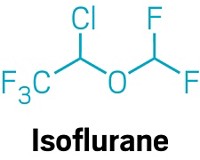Advertisement
Grab your lab coat. Let's get started
Welcome!
Welcome!
Create an account below to get 6 C&EN articles per month, receive newsletters and more - all free.
It seems this is your first time logging in online. Please enter the following information to continue.
As an ACS member you automatically get access to this site. All we need is few more details to create your reading experience.
Not you? Sign in with a different account.
Not you? Sign in with a different account.
ERROR 1
ERROR 1
ERROR 2
ERROR 2
ERROR 2
ERROR 2
ERROR 2
Password and Confirm password must match.
If you have an ACS member number, please enter it here so we can link this account to your membership. (optional)
ERROR 2
ACS values your privacy. By submitting your information, you are gaining access to C&EN and subscribing to our weekly newsletter. We use the information you provide to make your reading experience better, and we will never sell your data to third party members.
Biological Chemistry
Toluene On The Brain
Common solvent abused as an inhalant increases dopamine release in rat brains
by Ivan Amato
January 11, 2007
Huffing. Bagging. Dusting. These are names for getting high by inhaling solvents like the toluene in spray paint. It's a type of substance abuse popular among middle schoolers, according to the National Institute on Drug Abuse (NIDA).
Neurophysiologist Arthur C. Riegel of the University of Arizona, neurochemist Agustin Zapata of NIDA, and their colleagues have now confirmed that toluene exposure increases release of the neurotransmitter dopamine in brain regions associated with reward and addiction (Neuropsychopharmacology, DOI: 10.1038/sj.npp.1301273). Prior studies suggested that toluene might not abide by the prevalent "dopamine hypothesis" for the basis of addiction, Riegel notes.
Using microelectrodes in rat brain tissue slices, the researchers observed that toluene, in drug-abuse-like amounts, selectively stimulates dopamine-releasing neurons in the ventral tegmental area (VTA). This area connects to a key neural reward area, the nucleus accumbens (ACB). Using tiny microdialysis tubes for delivering and drawing fluids from the VTA and ACB of living rats, the team was able to use high-performance liquid chromatography to directly detect and measure toluene-induced dopamine spikes.





Join the conversation
Contact the reporter
Submit a Letter to the Editor for publication
Engage with us on Twitter